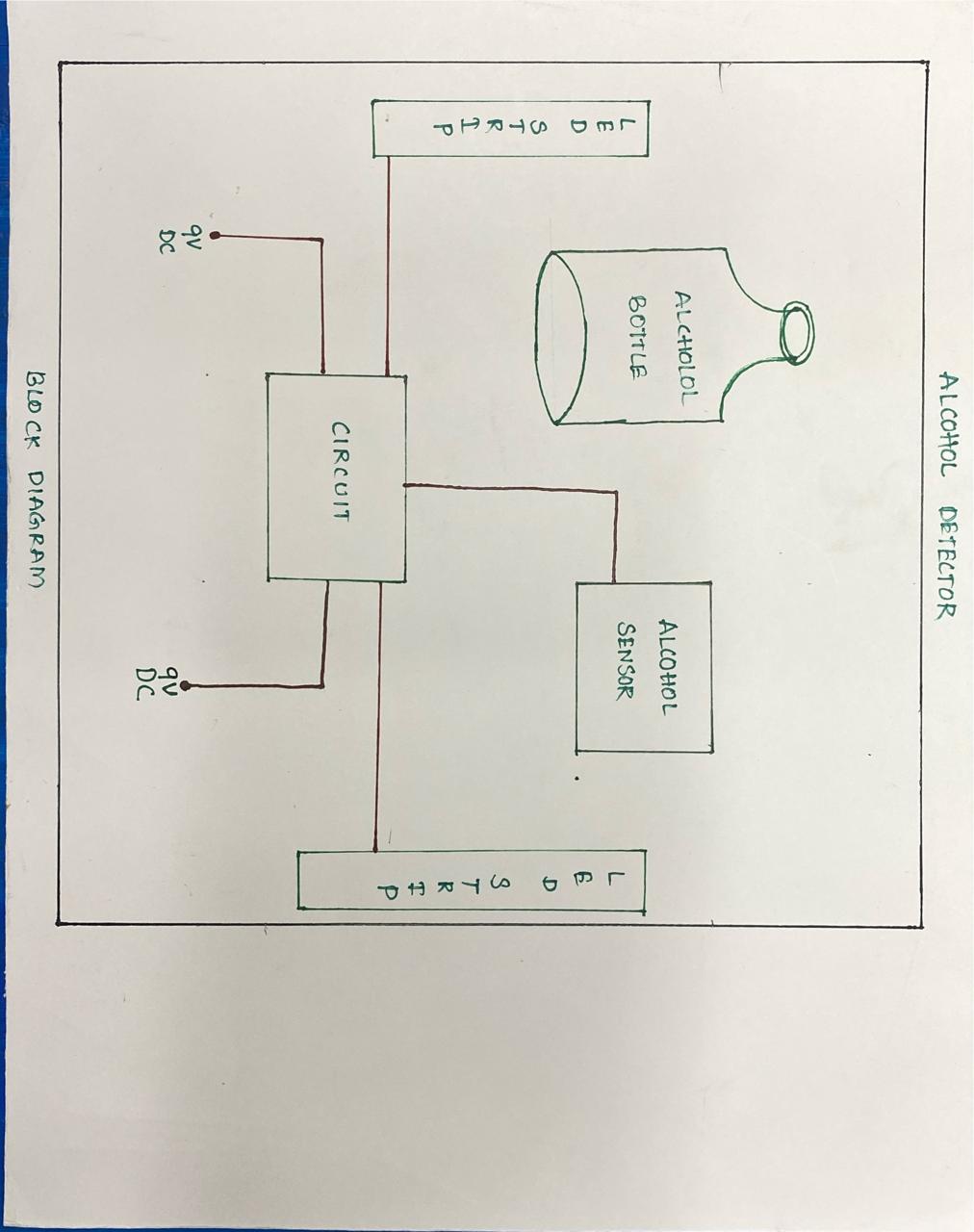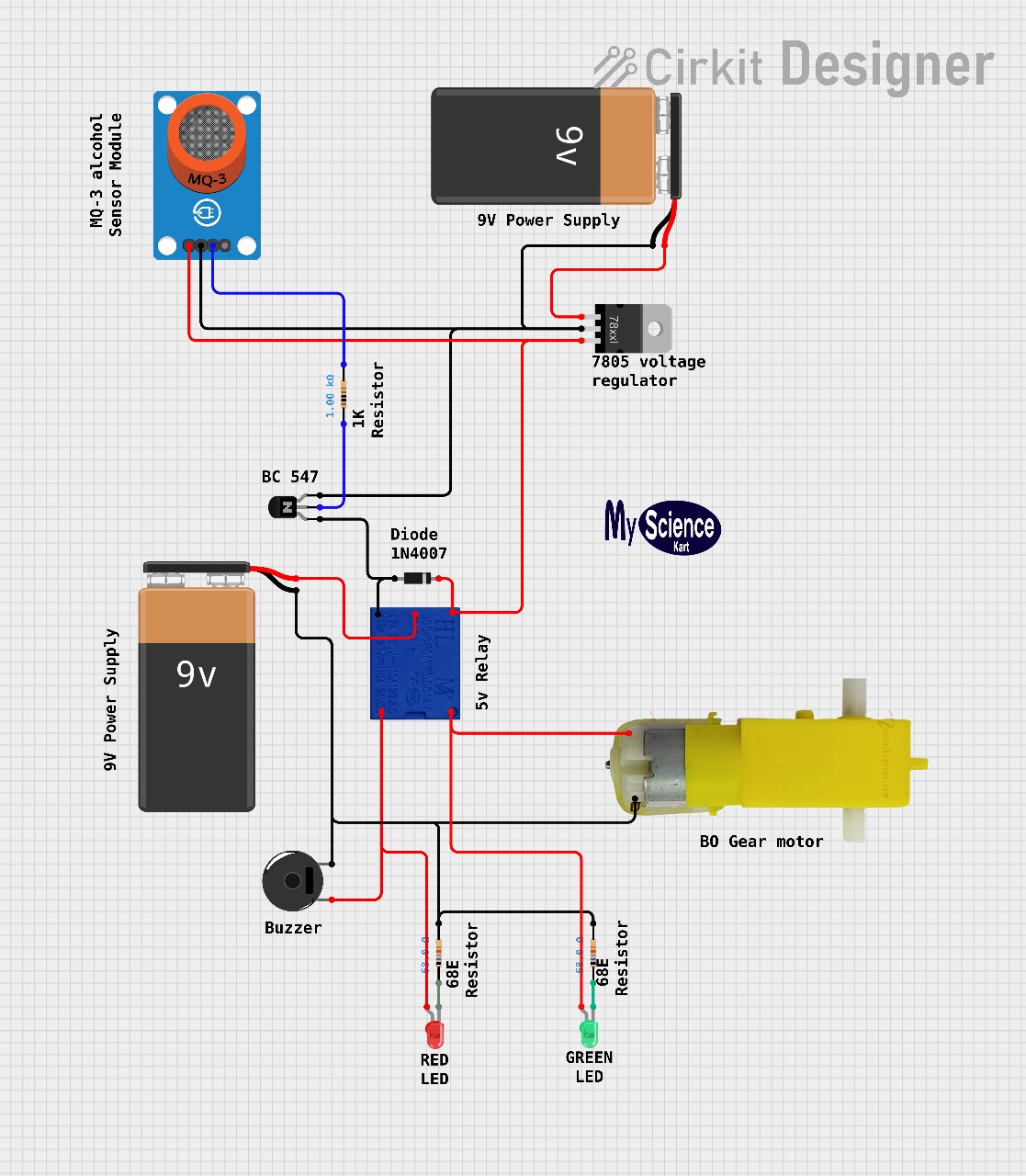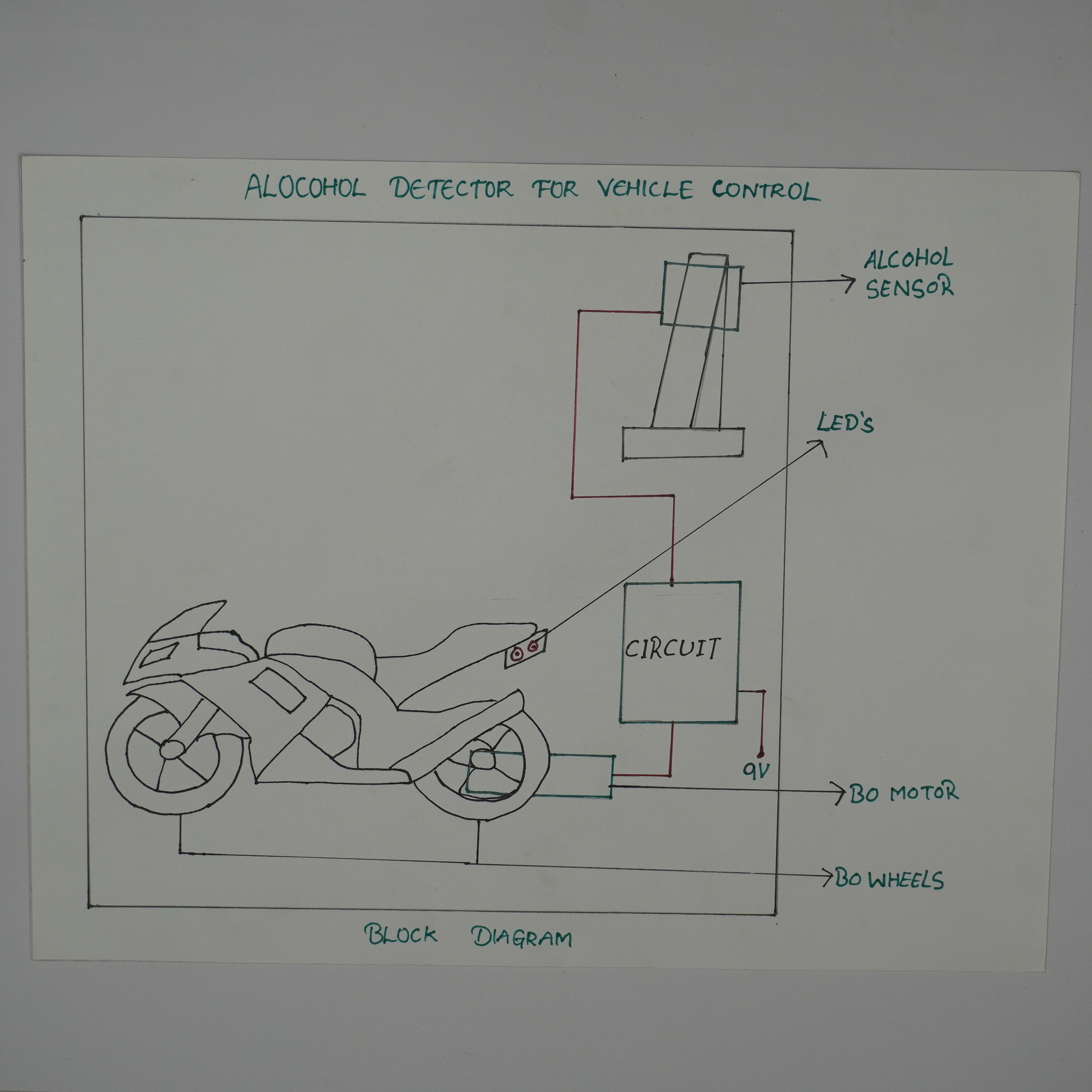Alcohol Detector for Vehicle Control
- 2024 .
- 4
- Quality: HD
Genre: SCIENCE PROJECTS WITH WORKING MODELS IN ENGLISH
Country: Unknown
Brief Description
Alcohol Detector for Vehicle Control
Product Overview:
The Alcohol Detector for Vehicle Control is a practical and
educational tool designed specifically for students. This device serves as a
hands-on learning kit to understand the principles of alcohol detection and its
applications in vehicle safety. By integrating this system, students can
explore the intersection of technology, safety, and engineering.
Key Features:
- Educational
Focus:
- Designed
for student projects and experiments.
- Provides
a comprehensive learning experience in sensor technology and safety
engineering.
- Alcohol
Sensor Module:
- Equipped
with a high-sensitivity alcohol sensor.
- Accurate
detection of alcohol levels in the air.
- Microcontroller
Integration:
- Compatible
with popular microcontrollers (e.g., Arduino, Raspberry Pi).
- Easy
to program and customize for various applications.
- Visual
and Audible Alerts:
- LED
indicators and buzzer for real-time alerts.
- Clear
indication of alcohol presence beyond a set threshold.
- Vehicle
Control Interface:
- Can
be integrated with a vehicle's ignition system.
- Prevents
the vehicle from starting if alcohol is detected, simulating real-world
applications.
- Easy
Assembly:
- Comes
with detailed instructions for assembly and testing.
- No
prior experience required, making it perfect for beginners.
- Safety
Features:
- Safe
to use in educational environments.
- Low
power consumption and robust build.
Applications:
- Student
Projects: Ideal
for science fairs, engineering projects, and classroom demonstrations.
- Educational
Institutions:
Useful for high schools, colleges, and universities to teach students
about sensor technology and its applications.
- Hands-On
Learning:
Provides practical experience in integrating sensors with microcontrollers
and understanding vehicle safety systems.
What's Included:
- Alcohol
sensor module
- Microcontroller
board (optional)
- Buzzer
and LED indicators
- Wiring
and connectors
- Assembly
and user guide
Specifications:
- Sensor
Type:
Semiconductor alcohol sensor
- Power
Supply: 5V DC
- Output: Digital and analog signals
- Detection
Range: 0.05
mg/L to 10 mg/L
- Dimensions: Compact and portable design
Why Choose This Product:
The Alcohol Detector for Vehicle Control is a valuable
educational tool that brings theory to life. By engaging in hands-on
experimentation, students can better understand the importance of alcohol
detection technology and its critical role in promoting vehicle safety. This
kit is not only educational but also fosters creativity and innovation in young
minds.
Project Report
Alcohol Detector for Vehicle Control
1. Introduction:
The Alcohol Detector for Vehicle Control is designed to
prevent drunk driving by detecting alcohol levels in the driver’s breath and
disabling the vehicle's ignition system if alcohol is detected. This project
aims to enhance road safety by integrating sensor technology with vehicle
control systems. The detailed project report includes a comprehensive
explanation of each component, their functions, and how they work together.
2. Components and Materials:
- Alcohol
Sensor (MQ-3):
- Function:
Detects alcohol levels in the breath.
- Usage:
Converts the presence of alcohol in the air into an electrical signal.
- Details:
The MQ-3 sensor is highly sensitive to alcohol and provides an analog
output based on the concentration of alcohol.
- Microcontroller
(Arduino UNO):
- Function:
Processes the signal from the alcohol sensor and controls the vehicle's
ignition system.
- Usage:
Acts as the brain of the project, executing the programmed instructions.
- Details:
The Arduino UNO is a widely used microcontroller with digital and analog
input/output pins, making it ideal for prototyping.
- Relay
Module:
- Function:
Acts as a switch to control the vehicle's ignition system.
- Usage:
Turns the ignition on or off based on the microcontroller's signal.
- Details:
The relay module isolates the high voltage ignition circuit from the low
voltage control circuit.
- LED
Indicators:
- Function:
Provide visual feedback on the system's status.
- Usage:
Indicate whether alcohol is detected or not.
- Details:
Typically, a red LED is used to indicate alcohol detection, and a green
LED indicates no alcohol presence.
- Buzzer:
- Function:
Provides audible feedback.
- Usage:
Alerts the driver when alcohol is detected.
- Details:
The buzzer is activated by the microcontroller when alcohol is detected.
- Power
Supply:
- Function:
Provides power to the entire system.
- Usage:
Supplies the required voltage to the sensor, microcontroller, relay,
LEDs, and buzzer.
- Details:
Typically a 12V battery or a power adapter suitable for automotive use.
- Breadboard
and Jumper Wires:
- Function:
Facilitate connections between components.
- Usage:
Used for prototyping and testing the circuit.
- Details:
Breadboards allow for easy adjustments and testing without soldering.
- Vehicle
Ignition System (Simulated):
- Function:
Represents the vehicle's ignition.
- Usage:
Controlled by the relay to demonstrate the project's effectiveness.
- Details:
A simple DC motor or LED can simulate the ignition for demonstration
purposes.
3. Working Principle:
- Alcohol
Detection:
- The
MQ-3 sensor detects the presence of alcohol in the driver's breath and
generates a corresponding analog voltage signal.
- Signal
Processing:
- The
analog signal from the MQ-3 sensor is sent to an analog input pin on the
Arduino UNO.
- The
Arduino processes this signal and compares it to a predefined threshold
value representing the legal alcohol limit.
- Decision
Making:
- If
the detected alcohol level exceeds the threshold, the Arduino activates
the relay to disable the vehicle’s ignition system.
- Simultaneously,
the red LED is turned on, and the buzzer sounds to alert the driver.
- If
the alcohol level is below the threshold, the green LED remains on,
indicating the vehicle can be started.
- Ignition
Control:
- The
relay module, controlled by the Arduino, connects or disconnects the
ignition circuit.
- When
the relay is activated (alcohol detected), it breaks the circuit,
preventing the vehicle from starting.
- When
deactivated (no alcohol detected), the circuit is complete, allowing the
vehicle to start.
4. Circuit Diagram:
A simple circuit diagram includes:
- MQ-3
sensor connected to an analog input pin on the Arduino.
- Relay
module connected to a digital output pin on the Arduino.
- LEDs
and buzzer connected to appropriate digital output pins.
- Power
supply connections to the Arduino, sensor, relay, LEDs, and buzzer.
5. Programming:
The Arduino is programmed using the Arduino IDE. The code
includes:
- Initialization
of sensor, relay, LEDs, and buzzer.
- Reading
the sensor value and converting it to alcohol concentration.
- Comparing
the concentration to the threshold.
- Controlling
the relay, LEDs, and buzzer based on the comparison.
6. Testing and Calibration:
- Calibration:
Adjust the threshold value in the code based on testing with known alcohol
concentrations.
- Testing:
Ensure the system correctly identifies alcohol presence and appropriately
controls the ignition system.
7. Conclusion:
This project provides a practical solution to prevent drunk
driving, enhancing road safety. By understanding the components and their
functions, students gain hands-on experience in integrating sensor technology
with real-world applications.
For further exploration, additional features such as GPS
tracking, data logging, and mobile notifications can be incorporated into the
system.
no source code for this project
Additional Information
Alcohol Detector for Vehicle Control
- Unveiling Dark Secrets and Research for Students
Product Overview:
The Alcohol Detector for Vehicle Control is
not just a tool; it's an exploration into the hidden aspects of alcohol
detection technology and its implications in vehicle safety. This device is
specifically designed to provide students with an in-depth understanding of the
technology, its applications, and the potential ethical and societal issues
associated with it. Through this product, students can delve into the
lesser-known facets of alcohol detection and its impact on modern
transportation systems.
Key Features:
- Comprehensive Educational Focus:
- Designed for student projects, research, and experiments.
- Provides a thorough understanding of alcohol sensor technology and
its integration with vehicle systems.
- Advanced Alcohol Sensor Module:
- Equipped with a high-sensitivity alcohol sensor.
- Capable of detecting minute levels of alcohol in the air with
precision.
- Microcontroller Integration:
- Compatible with popular microcontrollers (e.g., Arduino, Raspberry
Pi).
- Facilitates easy programming and customization for various
research applications.
- Visual and Audible Alerts:
- LED indicators and buzzer for real-time alerts.
- Clear indication of alcohol presence beyond a set threshold.
- Vehicle Control Interface:
- Can be integrated with a vehicle's ignition system.
- Prevents the vehicle from starting if alcohol is detected,
simulating real-world applications.
- Detailed Assembly and Testing Instructions:
- Comes with comprehensive guidelines for assembly and testing.
- Suitable for both beginners and advanced students.
- Ethical and Societal Impact Exploration:
- Encourages students to investigate the ethical implications of
alcohol detection technology.
- Promotes discussions on privacy, legal issues, and societal
impact.
Dark Secrets and Research Opportunities:
- History and Evolution:
- Explore the development of alcohol detection technology from its
inception to the present day.
- Understand the advancements and the challenges faced over the
years.
- Ethical Dilemmas:
- Investigate the ethical concerns surrounding the use of alcohol
detectors in vehicles.
- Discuss privacy issues, data security, and potential misuse of the
technology.
- Legal and Societal Implications:
- Study the legal frameworks governing the use of alcohol detection
devices in different countries.
- Analyze the societal impact, including public safety and the
balance between regulation and personal freedom.
- Technological Challenges:
- Research the technical challenges in developing highly sensitive
and accurate alcohol sensors.
- Explore the limitations and potential areas for improvement.
- Case Studies:
- Examine real-world case studies where alcohol detection technology
has been implemented in vehicles.
- Evaluate the effectiveness and the outcomes of these
implementations.
Applications:
- Student Projects and Research:
- Ideal for science fairs, research projects, and classroom
experiments.
- Provides a platform for students to conduct in-depth research and
present their findings.
- Educational Institutions:
- Suitable for high schools, colleges, and universities to teach
students about sensor technology, ethics, and societal impact.
- Encourages interdisciplinary learning, combining technology,
ethics, and law.
- Hands-On Learning:
- Offers practical experience in integrating sensors with
microcontrollers and understanding the real-world applications and
implications.
What's Included:
- Advanced alcohol sensor module
- Microcontroller board (optional)
- Buzzer and LED indicators
- Wiring and connectors
- Comprehensive assembly and user guide
Why Choose This Product:
The Alcohol Detector for Vehicle Control is
more than an educational tool; it's a gateway to understanding the complex
interplay between technology, ethics, and society. By engaging in hands-on
experimentation and research, students can uncover the hidden aspects of
alcohol detection technology and its broader implications. This kit inspires
curiosity, critical thinking, and innovation, making it an invaluable resource
for the next generation of engineers, scientists, and thinkers.
© © Copyright 2024 All rights reserved. All rights reserved.




